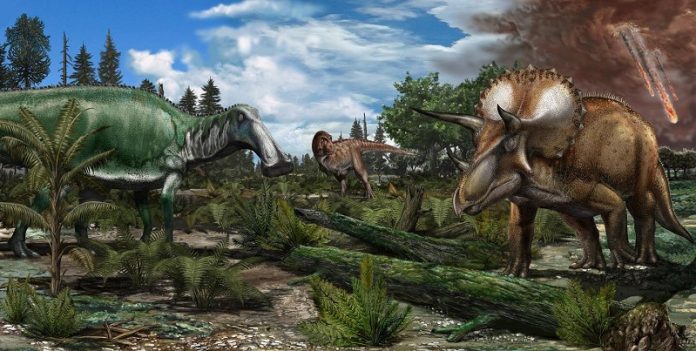
For decades, scientists have debated whether dinosaurs were already struggling before the asteroid strike that wiped them out 66 million years ago.
But a new study from researchers at University College London (UCL) suggests that dinosaurs may have been doing just fine—and that the idea of their decline could be the result of a poor fossil record, not a real drop in species.
The study, published in Current Biology, focused on the 18 million years leading up to the asteroid impact at the end of the Cretaceous period.
The researchers looked at over 8,000 dinosaur fossils found mostly in North America.
At first glance, the fossil record seems to show that dinosaur diversity peaked about 75 million years ago and then slowly declined. But the researchers say that this drop may not reflect what actually happened in nature.
According to Dr. Chris Dean, the lead author from UCL Earth Sciences, the fossil record from the last few million years of the Cretaceous is simply not very complete.
That’s because fewer rock layers from this time are exposed and accessible to scientists.
As a result, the chances of finding fossils from this period are lower—not necessarily because there were fewer dinosaurs, but because the fossils are harder to find.
The researchers used a method called occupancy modeling, which is often used in ecology to estimate how likely a species is to live in certain areas.
They studied four well-known dinosaur groups: the armored Ankylosauridae, the horned Ceratopsidae (like Triceratops), the duck-billed Hadrosauridae, and the carnivorous Tyrannosauridae (like T. rex).
By dividing North America into a grid and using geological, climate, and rock data from the Cretaceous, the team estimated how many areas these dinosaurs likely lived in. They found that the amount of land these dinosaurs could have lived on stayed about the same over time, suggesting that their habitats and chances of survival didn’t change much. This supports the idea that dinosaurs weren’t truly in decline.
What did change, however, was the ability to detect their fossils. Over time, it became harder to find the right kinds of rock in accessible places, and the number of fossil discoveries dropped. This led to the false appearance of a decline.
Interestingly, one group—Ceratopsians—seemed to do better in the final years of the Cretaceous. Their fossils were found more often and in more places than other groups. The researchers believe this might be because these dinosaurs lived in green plains, a type of environment that became more common and better preserved in the fossil record after a large inland sea dried up.
Dr. Alessandro Chiarenza, a co-author of the study, explained that geological changes like mountain building and sea-level shifts reduced the fossil record’s coverage. So while it may look like dinosaurs were dying out, it’s more likely that they were still thriving until the asteroid suddenly ended their reign.
“If that asteroid hadn’t hit,” said Chiarenza, “dinosaurs might still be walking the Earth today—alongside mammals, lizards, and birds, their living descendants.”
Source: University College London.



